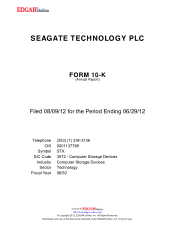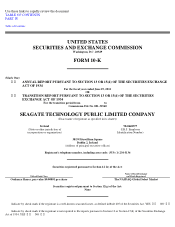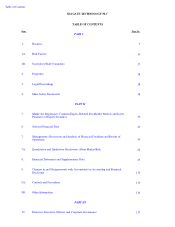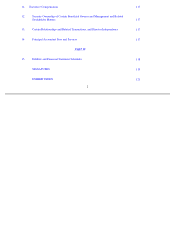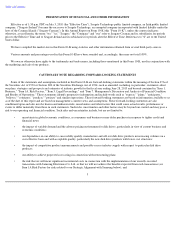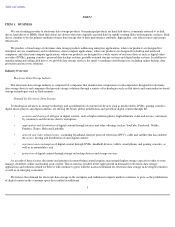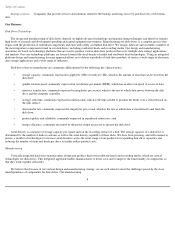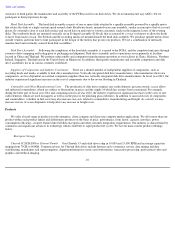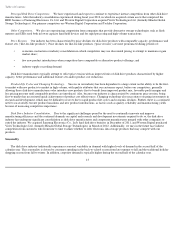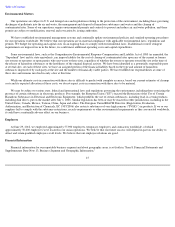Seagate 2011 Annual Report Download - page 10
Download and view the complete annual report
Please find page 10 of the 2011 Seagate annual report below. You can navigate through the pages in the report by either clicking on the pages listed below, or by using the keyword search tool below to find specific information within the annual report.
Table of Contents
Mission critical applications are defined as those that are vital to the operation of enterprises, requiring high performance and high
reliability solutions. We expect the market for mission critical enterprise storage solutions to continue to be driven by enterprises moving
network traffic to dedicated storage area networks in an effort to reduce network complexity and increase energy savings. We believe that this
transition will lead to an increased demand for more energy efficient, smaller form factor solutions. These solutions are comprised principally of
high performance enterprise class disk drives with sophisticated firmware and communications technologies.
Solid state drive ("SSD") storage applications have been introduced as a potential alternative to redundant system startup or boot disk
drives. In addition, enterprises are gradually adopting SSDs in applications where rapid processing and/or energy efficiency is required. The
timing of significant adoption of SSDs is dependent on enterprises weighing the cost effectiveness and other benefits of mission critical
enterprise disk drives against the perceived performance benefits of SSDs.
Nearline applications are defined as those which require high capacity and energy efficient solutions featuring low costs per gigabyte. We
expect such applications, which include storage for cloud computing, content delivery and backup services, will continue to grow and drive
demand for solutions designed with these attributes. With the increased consumption of media rich content streamed from the cloud, we expect
increased petabyte demand for high capacity nearline devices.
Client Compute. We define client compute applications as solutions designed for desktop and mobile compute applications. We believe
that the increase in demand resulting from growing economies of certain countries and the continued proliferation of digital content will continue
to drive growing demand for the client compute market. As the storage of digital content in the cloud becomes more prominent, some client
compute applications may require less built-in storage, and therefore SSDs could become more competitive within the client compute market in
the future. SSDs could become more competitive within the client compute market in the future as mobile compute applications transition to
smaller and thinner form factors.
Client Non-Compute. We define client non-compute applications as solutions designed for consumer electronic devices and disk drives
used for external storage and network-attached storage (NAS). Disk drives designed for consumer electronic devices are primarily used in
applications such as DVRs and gaming consoles that require a higher capacity, low cost-per-gigabyte storage solution. Disk drives for external
and NAS devices are designed for purposes such as personal data backup and portable external storage, and to augment storage capacity in the
consumer's current desktop, notebook, tablet or DVR disk drive capacities. Client non-compute applications also include devices designed to
display digital media in the home theater. We believe the proliferation and personal creation of high definition and media-rich digital content
will continue to create increasing consumer demand for higher storage solutions.
Participants in the electronic data storage industry include:
Major subcomponent manufacturers. Companies that manufacture components or subcomponents used in electronic data storage devices
or solutions include companies that supply spindle motors, heads and media, application specific integrated circuits (ASICs) and glass substrates.
Hardware storage solutions manufacturers. Companies that transform components into storage products include disk drive
manufacturers and semiconductor storage manufacturers which include integrating flash memory into storage products such as solid state drives
(SSDs).
System integrators. Companies that bundle and package storage solutions into client compute, client non-compute or enterprise
applications as well as enterprise storage solutions. Distributors that integrate storage hardware and software into end-user applications are also
included in this category.
7

